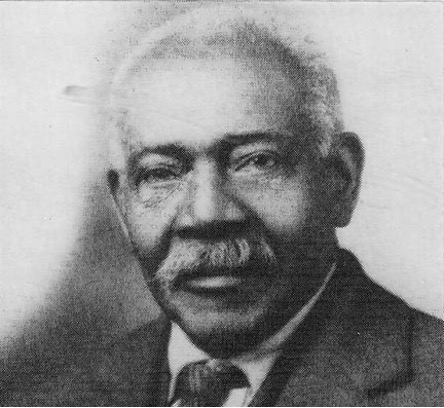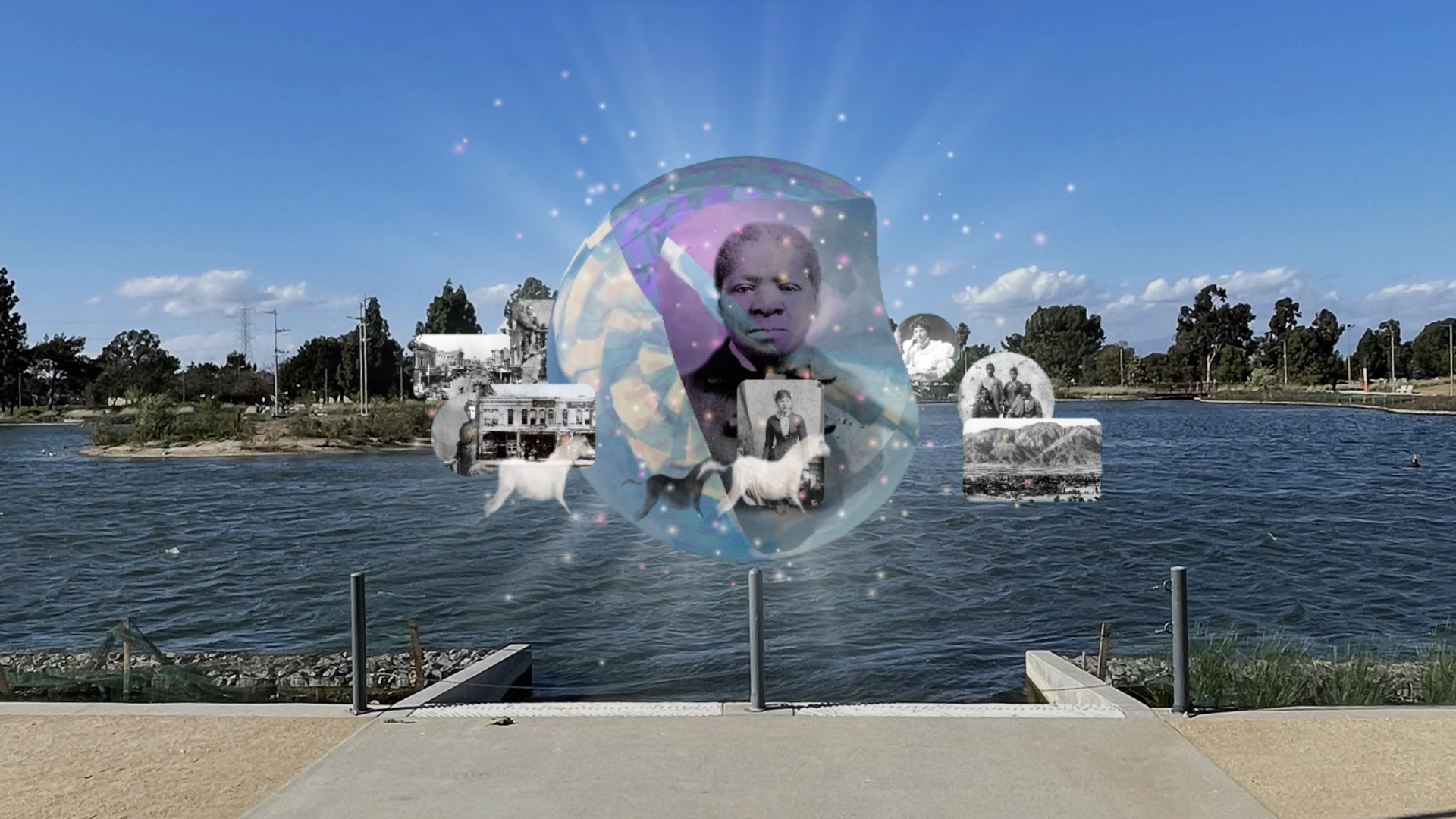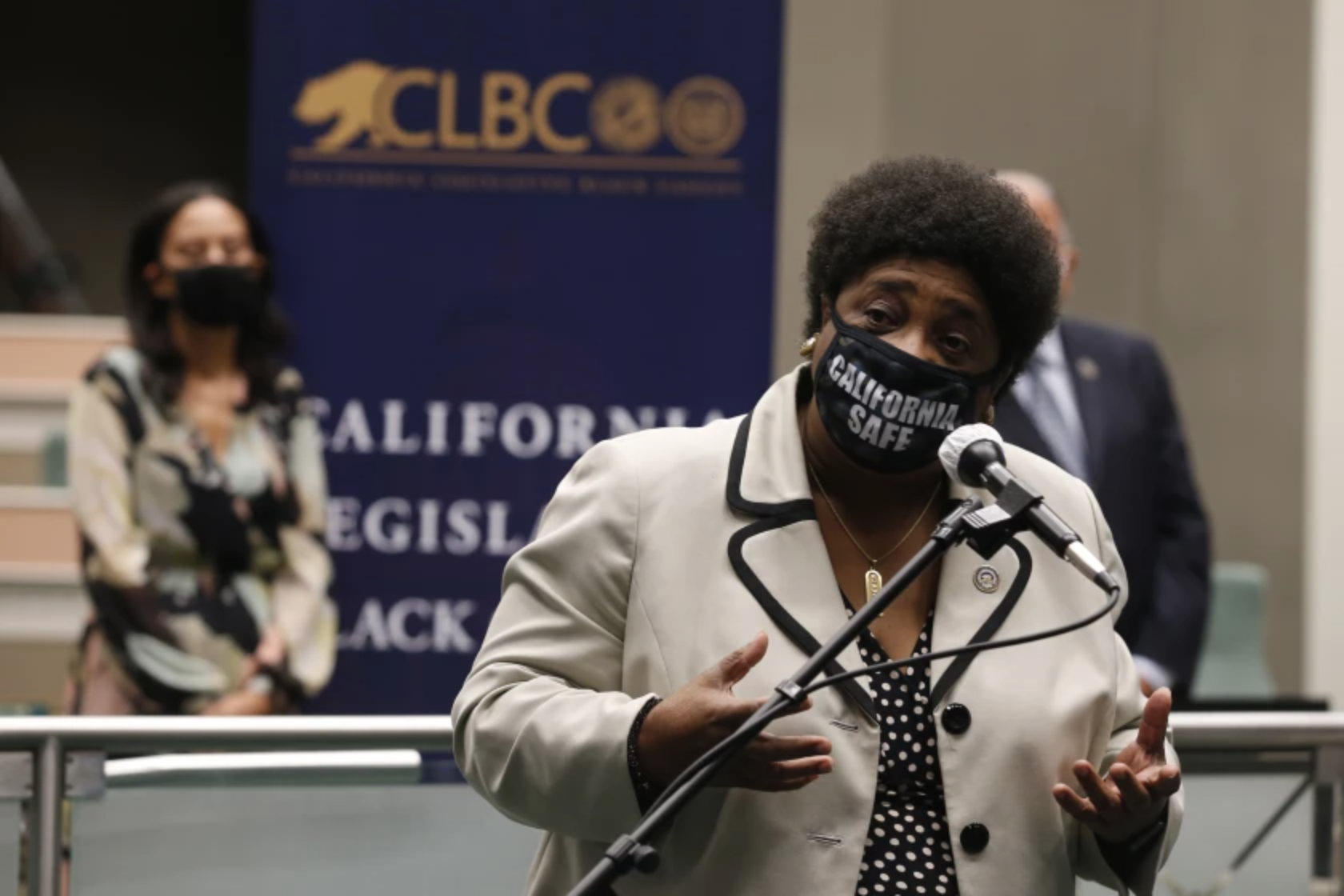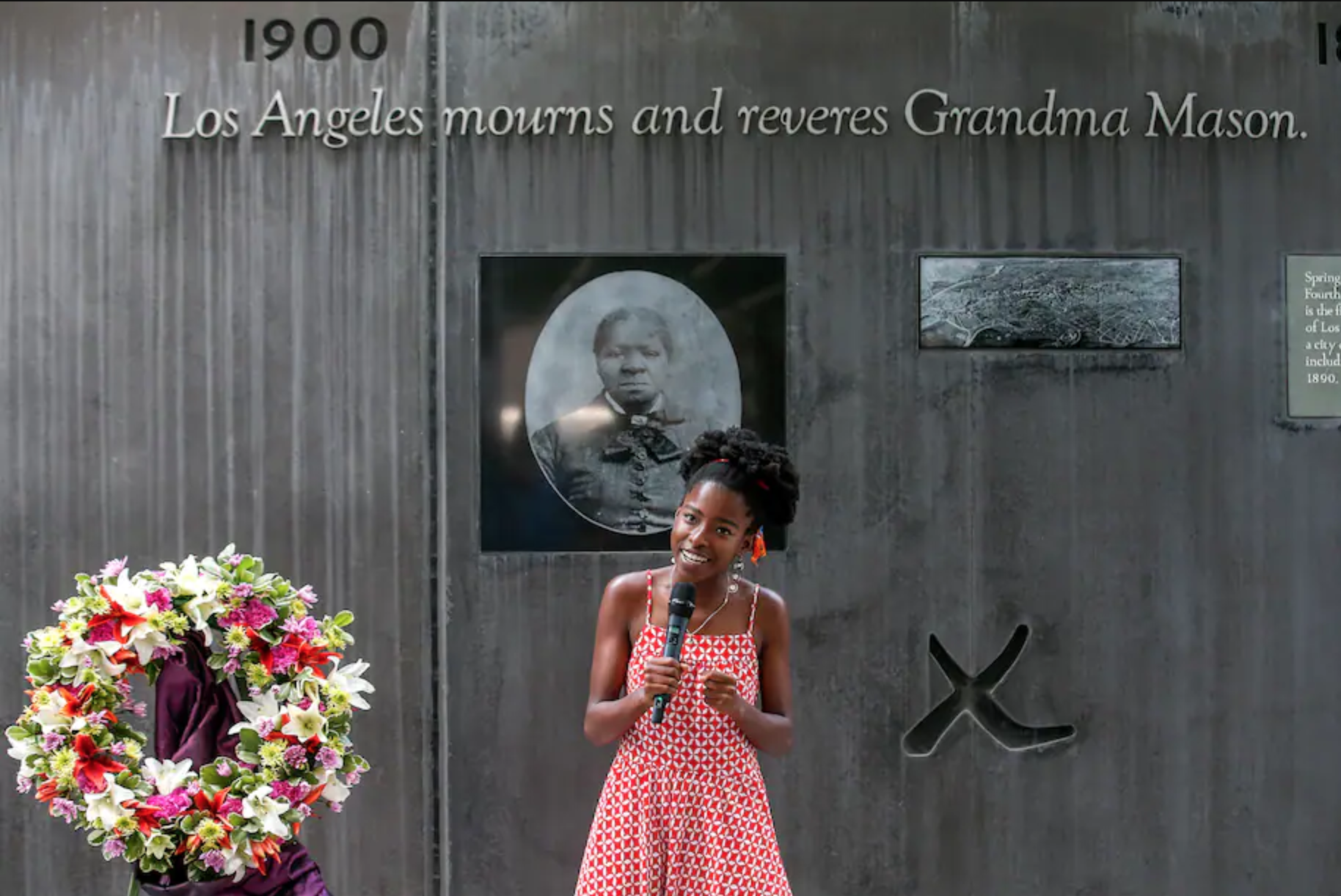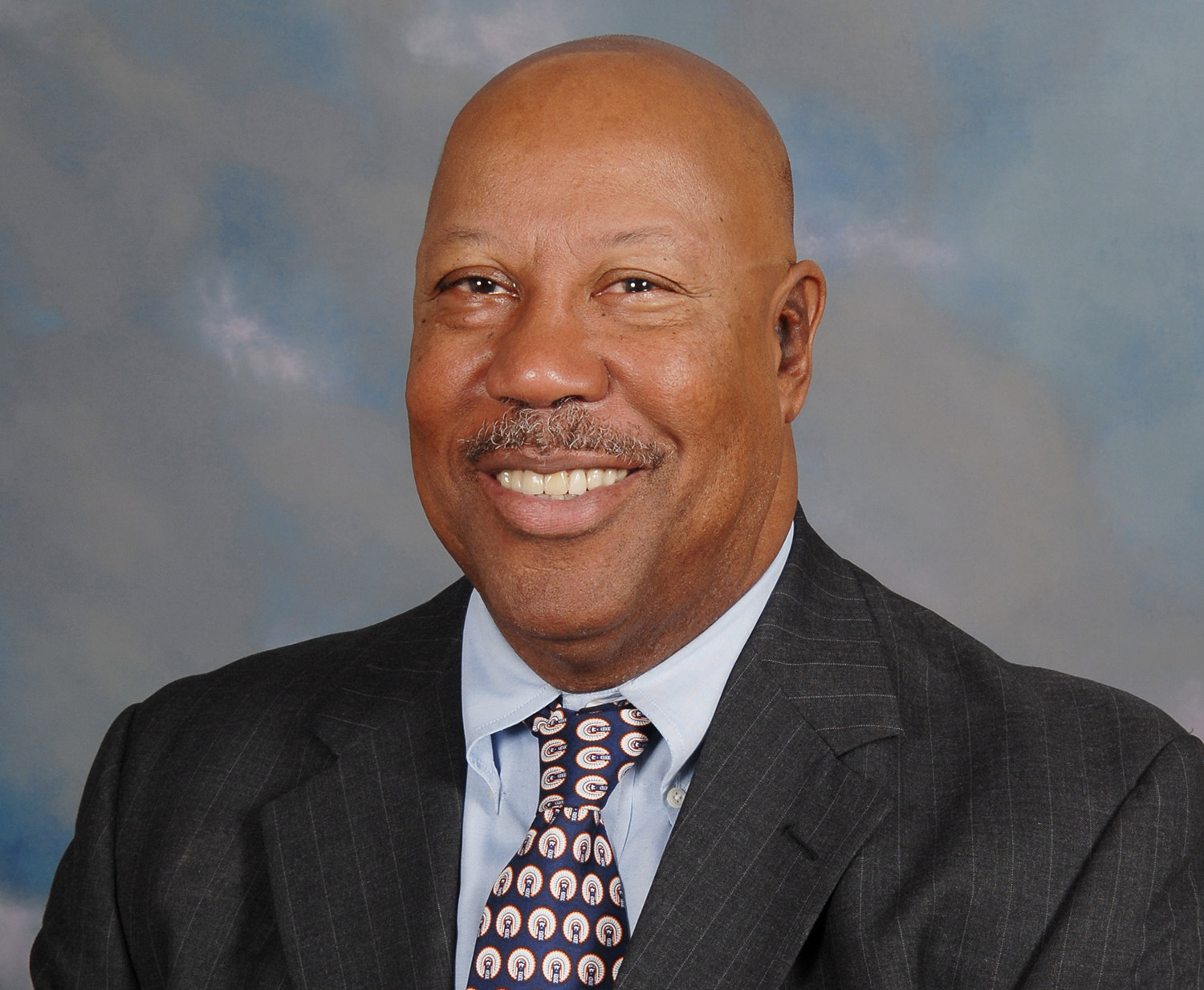RAIN — Just before our paper went to press this morning, it clouded up very suddenly, and in a few minutes we were favored with a refreshing shower of rain, which seemed to betoken, in the miners’ faces, the “good time coming.” The shower was accompanied by repeated flashes of lightning and peals of thunder, which is something unusual; and we think the probability is that the weather, as well as the country, is becoming Americanized. [1]
Sacramento Daily Union
October 4, 1852

While attempting to catalogue as many California freedom suits as I could identify, I ran into this hypnotically bizarre interlude on rain, wedged between (1) the report I was looking for, under the heading “FUGITIVE SLAVE CASE,” of an unnamed woman being arrested twice “on the plea of being the property of Amelia Raymon” and (2) a description of steamboats leaving San Francisco, followed by a paragraph on the Young Men’s Whig Club. I was struck by the rain account’s placement and indulgence. In my uncharitable 21st-century reading, it strives for wry and lands at self-important, near yet not charming, uncertain of its own irony. Jenny Offill’s eyes would narrow: prime epigraph material for her next novel.
The woman was ultimately discharged, free. I wish I knew her name.
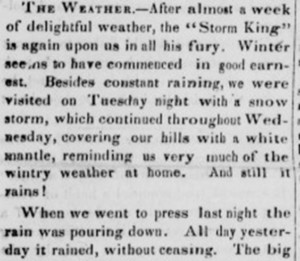 I was reading the Sacramento Daily Union via the California Digital Newspaper Collection (Center for Bibliographic Studies and Research, the University of California, Riverside), working from notes generously shared by Professor Stacey Smith of Oregon State University. Her research on Californian labor history had found at least 23 freedom suits (suits that adjudicated the freedom of a party in some way) brought in California between 1850 and 1864. Of these 23, 19 cases adjudicated the freedom of one person; two cases that of two people; and one case that of three people. Last, one case, Biddy Mason’s, freed 14 individuals.
I was reading the Sacramento Daily Union via the California Digital Newspaper Collection (Center for Bibliographic Studies and Research, the University of California, Riverside), working from notes generously shared by Professor Stacey Smith of Oregon State University. Her research on Californian labor history had found at least 23 freedom suits (suits that adjudicated the freedom of a party in some way) brought in California between 1850 and 1864. Of these 23, 19 cases adjudicated the freedom of one person; two cases that of two people; and one case that of three people. Last, one case, Biddy Mason’s, freed 14 individuals.
I started by looking for narrative mentions and footnote citations of freedom suits in Smith’s book Freedom’s Frontier: California and the Struggle over Unfree Labor, Emancipation, and Reconstruction, Thomas Morris’s Free Men All: The Personal Liberty Laws of the North, 1780-1861, Rudolph Lapp’s Blacks in Gold Rush California, and journal articles by Delilah L. Beasley[2], Clyde A. Duniway[3], and Paul Finkelman.[4] I also did some preliminary searching on LexisNexis and Westlaw, the two major legal research databases to which I have access as a law student, hoping to find more information. However, many freedom suits never received appellate review so were not included on those platforms. Instead, they were adjudicated by state, county, and police courts, or before justices of the peace. Indeed, Professor Smith had mostly found the cases she did through brute-force archival research, examining county court records and years of newspapers.
I also turned to Helen T. Catterall’s catalogue of nearly every reported state and federal case involving slavery in the United States, the British Isles, and Canada before 1875, Judicial Cases Concerning American Slavery and the Negro. Compiled before legal records were digitized, its five volumes took many years of research and collation of cases. The volumes are bundled by state, and within each, the cases are chronologically ordered, with abbreviated quotations of their facts and holdings. The first volume was published in 1926, but Catterall died in 1933, four years before the final volume (concerning states north of the Ohio and west of the Mississippi) was finished, co-edited by James J. Hayden.
 It seems likely that the Biddy Mason suit, involving the freedom of 14 persons, was the largest such case west of Texas, and maybe even eastward, as well. To contextualize its significance, we will be continuing to look for cases of the same scale. I wonder in particular about Kansas, given the state’s borders with Nebraska and Missouri, and its much-contested admission as a nominally “free” state.
It seems likely that the Biddy Mason suit, involving the freedom of 14 persons, was the largest such case west of Texas, and maybe even eastward, as well. To contextualize its significance, we will be continuing to look for cases of the same scale. I wonder in particular about Kansas, given the state’s borders with Nebraska and Missouri, and its much-contested admission as a nominally “free” state.
After following up on Smith’s leads, I searched for more on the last freedom suit on record in California.
 In 1863, a twelve-year-old enslaved child, Adda (also known as Edith), was taken westward from Missouri. Daniel Blue, a free Black man living in Sacramento, filed a complaint against her slaveholder petitioned the judge issue a writ of habeas corpus to compel the slaveholder to bring her into court to determine whether she was being detained illegally.[5] Blue was able to call free Black witnesses to refute the slaveholder’s claims that Adda wanted to stay with him. On March 9, 1864, a Sacramento probate judge removed the child from her slaveholder’s custody and granted Blue’s petition to become her guardian.[6]
In 1863, a twelve-year-old enslaved child, Adda (also known as Edith), was taken westward from Missouri. Daniel Blue, a free Black man living in Sacramento, filed a complaint against her slaveholder petitioned the judge issue a writ of habeas corpus to compel the slaveholder to bring her into court to determine whether she was being detained illegally.[5] Blue was able to call free Black witnesses to refute the slaveholder’s claims that Adda wanted to stay with him. On March 9, 1864, a Sacramento probate judge removed the child from her slaveholder’s custody and granted Blue’s petition to become her guardian.[6]
In 1856, Blue was appointed to fundraise for a new site for a “colored school.”[7] In 1860, his house burned to the ground; everyone lived, but nothing was insured.[8] In 1873, “Daniel Blue (colored) applied to have his two daughters admitted into the Grammar School.”[9] Six ayes, one no. And, in 1884, his death was noted, in a column that began, “Three carloads of immigrants arrived this morning. A large shipment of apples is being made from this city to Australia. The Sacramento river is falling, and has receded to 9 feet 10 inches.”[10] The next day, a long obituary appeared:
For a Sacramentan to have said he did not know Uncle Daniel Blue was to argue his ignorance of the city and its people […] The city will miss the familiar bent form of the old man […] who lived up to his highest development, passed the allotted lease of life without a shade of querulous old age, and went to his rest known of all his fellow-citizens, and with fewer to speak ill of him than falls to the lot of most men.[11]
Sacramento Daily Union
October 18, 1884
I read it carefully. Unlike the rain and apples, his noteworthiness persists.
[1] Sacramento Daily Union, October 4, 1852, https://cdnc.ucr.edu/?a=d&d=SDU18521004&e=——185-en–20–1-byDA.rev-txt-txIN-rain—-1852—1 (accessed August 26, 2020).
[2] Delilah L. Beasley. “Slavery in California.” The Journal of Negro History 3, no. 1 (1918): 33-44.
[3] Clyde A. Duniway, “Slavery in California after 1848,” American Historical Association Annual Report for the Year 1905 (2 vols., Washington, D.C., 1906), I, 245-46.
[4] Paul Finkelman, “The Law of Slavery and Freedom in California 1848-1860,” California Western Law Review 17, no. 3 (1980-1981): 437-464; Paul Finkelman, “Prelude to the Fourteenth Amendment: Black Legal Rights in the Antebellum North,” Rutgers Law Journal 17, no. Issues 3 & 4 (Spring and Summer 1986): 415-482.
[5] Smith, Stacey. (2014, March 05). “California’s Last Slave Case.” Opinionator (blog). New York Times. March 5, 2014. https://opinionator.blogs.nytimes.com/2014/03/05/californias-last-slave-case/
[6] See also Sacramento Daily Union, February 25, 1864, https://cdnc.ucr.edu/?a=d&d=SDU18640225.2.12&srpos=8&e=——-en–20-SDU-1-byDA-txt-txIN-%22daniel+blue%22——-1 (accessed August 26, 2020).
[7] Sacramento Daily Union, July 8, 1856, https://cdnc.ucr.edu/?a=d&d=SDU18560708.2.11&srpos=1&e=——-en–20-SDU-1-byDA-txt-txIN-%22daniel+blue%22——-1 (accessed August 27, 2020).
[8] Sacramento Daily Union, July 8, 1856, https://cdnc.ucr.edu/?a=d&d=SDU18560708.2.11&srpos=1&e=——-en–20-SDU-1-byDA-txt-txIN-%22daniel+blue%22——-1 (accessed August 27, 2020).
[9] Sacramento Daily Union, June 15, 1890, https://cdnc.ucr.edu/?a=d&d=SDU18900615.1.3&srpos=90&e=——-en–20-SDU-81-byDA-txt-txIN-%22daniel+blue%22——-1 (accessed August 27, 2020).
[11] Sacramento Daily News, October 18, 1884, https://cdnc.ucr.edu/?a=d&d=SDU18841018.2.32&srpos=87&e=——-en–20-SDU-81-byDA-txt-txIN-%22daniel+blue%22——-1 (accessed August 27, 2020).


